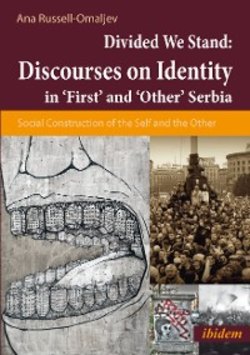Читать книгу Divided We Stand: Discourses on Identity in ‘First’ and ‘Other’ Serbia - Ana Omaljev - Страница 5
Table of Contents
ОглавлениеList of abbreviations
Preface and Acknowledgements
Introduction:Serbia, Europe and National Identity
The object of study
Europe and national identity
Aims of this book
Methodological approach
“First” and “Other” Serbia discourses on Europe and identity
Conclusion
Chapter 1:Theory and Method
Introduction
The first layer: discourse analysis
Why discourse analysis?
How to find meaning in discourse
The second layer: Self/Other analysis
The assumptions of Self/Other analysis and theories of alterity
Friendly, non-radical and radical Others
Debates and historical events
Official discourses and textual material
Serbian national identities
Interpreting history
Yugoslavia and Serbia
Chapter 2:Brief Historical Context (1987–2012)
The 1990s: the nationalist-authoritarian regime
Serbia’s road to war: misuse of political symbolism
Political discontent: crises and the call for democratization
The opposition unites: Bulldozer Revolution
Milošević's legacy
Transitional adjustments and the perspective of EU accession
Chapter 3:Best of Enemies: “First” and “Other” Serbia
Introduction
The Evolution of “First” and “Other” Serbia
“First” Serbia’s evolution in the 1980s and 1990s and the SANU Memorandum
“First” Serbia vocabulary
“First” Serbia after 2000
The post-2000 “Kosovo or Europe” debate
“Other” Serbia: beginnings and self-identification
Traitors and heroes
The organizations and social actors until 2000
“Other” Serbia’s rift after 2000
Conclusion
Chapter 4:The Construction of “Europe”
The “Idea of Europe”: Inclusion and exclusion
Representation of Europe in the “First” Serbia discourse
Nation and Church
Geography: “East for the West, and West for the East”
Military neutrality: Russia as part of the Self?
Srpski Sabor Dveri
Anti-occidentalism: The West as decadent
The “Europe or Kosovo” dilemma
Discursive constructions of in- and out-groups in the “First” Serbia
Positive self-presentation and national self-glorification
The difference attributed to Europe and Other-Serbians
The representation of Europe in “Other” Serbia discourse
The disagreement between soft liberals and hard-liners
On Serbia’s duty to recognize its past
The nature of crimes
The discursive construction of in and out-groups in “Other” Serbia
The production of negative self-presentation
The Serbian Self is inferior to the European other
The hard-liners’ variant: Balkanist discourse
Serbian identity (in)capable of change
Positive identification of the European Other
Absence of development discourse
Conclusion
Chapter 5:Mapping the Debates: “Point of Departure” and “Missionary Intelligentsia”
Mapping debates
The background to the debate: “Coming to the terms with the past”
Point of Departure: Serbian guilt
Hard-line liberals: Responsibility for war crimes
Departure on issue of gender
The Orthodox Church: Changing the cultural model
Re-conceptualized “discourse of non-interference”
The Missionary Intelligentsia Article
Other Serbia as the “enemy within”
Anti-liberal stance
“First” Serbia significant others
The construction of Serbian identity in the Missionary Intelligentsia debate
The civilizational difference
The concept of “good” and “bad” nationalism
Manufacturing nationalists
The cultural war in Serbia
The “Other” Serbia response
Let us be human, even if we are Serbs
Image of the Serbs as brutal and violent
“First-Serbian” as a radical Other to being European
Chapter 6:Serbian “Auto-chauvinism” or “Identification with the Aggressor”
Program-based destruction of national culture
The Communists
Identification with aggressors
Loyalty to foreign masters
Patriotism, national self-image and Kosovo
Conclusion
Conclusion
Is the past over yet? The evolution of Serbian national identities
Results of research
“First” Serbia's return to national symbols during transition
“Other” Serbia: Sustaining the anti-nationalist orientation
Disparate visions of “Europe” in the Serbian elites: change and continuity
Direction for further research
Bibliography
Primary Sources
Articles
Chapters
Books
